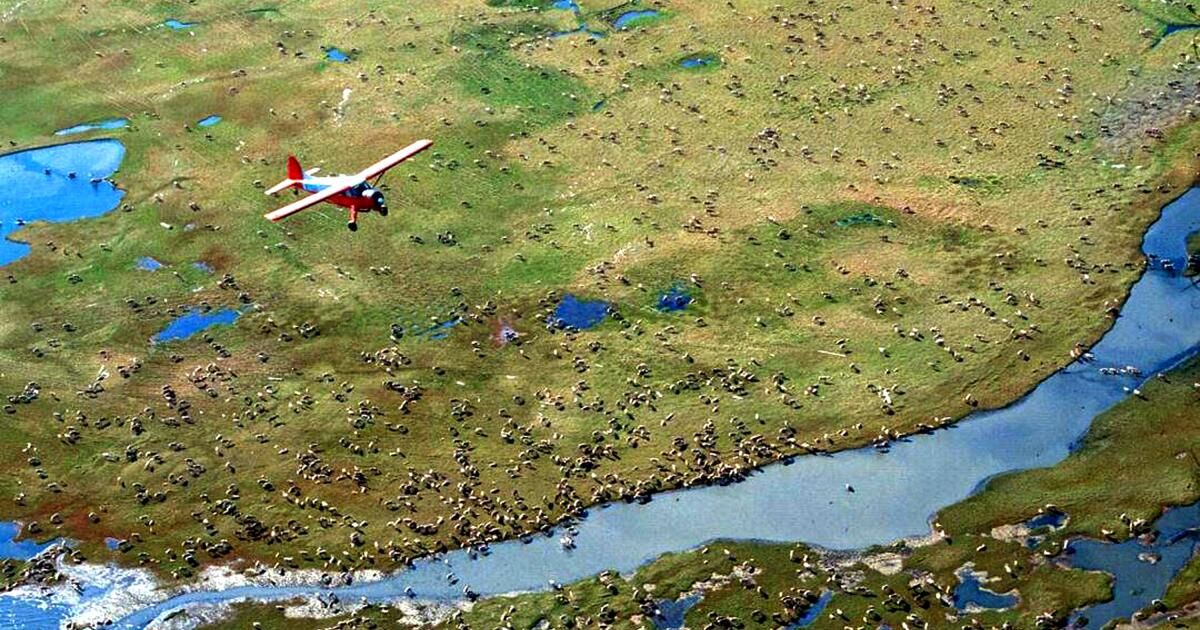“Alaska is America’s natural resource warehouse.” That is what Republican Gov. Mike Dunleavy told then-President Trump in 2018. But our home is much more than a storage place for the next fad of consumer desires in the lower 48 states. In Alaska we face an avalanche of proposed projects that threaten to destroy our way of life. Perhaps the most worrying of these is the proposed Ambler industrial mining highway.
The proposal involves building a highway to a potential mining district in remote northwest Alaska, near the Arctic. Proponents of the plan say they could access copper and other minerals that could be used for The US technology sector and green energy productsas wind turbines. But this road would traverse 211 miles of pristine wilderness, across the watershed that feeds thousands of rivers, streams and lakes, and deal a possibly fatal blow to the subsistence way of life my people have maintained for millennia.
I teach my children to see this landscape as my ancestors did: it is an intricately connected system of which we are only a small part. We depend on the land, animals, water and fish for our food. Caribou, moose, ducks, geese, berries and fish make up the majority of our diet. We use every part of the animals we capture and depend on their hides and skins for our clothing, tools, art and traditional clothing.
The area that would be affected by the highway includes the Brooks Range Mountains; the Yukon, Koyukuk and Kobuk rivers; and the Kanuti National Wildlife Refuge and Doors from the arctic National Park and Reserve, home to uninterrupted boreal forests, mountains, waterways and the 180,000 animals that make up the western arctic caribou herd. With the climate crisis, not only my people will suffer the destruction of my countries of origin, but all of humanity. The true critical resource for a green future is intact nature.
When this project was hurriedly green-lit under the Trump administration, 41 tribes, including mine, defendant to the federal government and asked it to follow its own policy to review what the effects of the project would be. This report was recently released by the Bureau of Land Management and describes just a fraction of the incredible consequences. Almost 90 tribes voiced opposition to the highway during the recent window that allowed public comments on the report.
The highway would require 3,000 culverts or water channels, 200 major bridges and would cause pollution of waterways. Trucks carrying hazardous materials would travel daily on Ambler’s gravel mining road, over permafrost tundra and waterways, including the federally designated Wilderness Kobuk River. There would also be fragmentation of Western Arctic caribou migration routes to a level never seen before; salmon alteration, wool ball and whitefish spawning areas; thawed permafrost; and the introduction of intrusions, noise and worse on our traditional tribal lands.
The big corporations that want the road show up in villages promising that it would help with affordable delivery of goods or create jobs for native communities. They claim that it is a single road that leads to a single mine. However, we can see beyond these lies. TO mining concessions map shows that they have made plans to use the highway to industrialize our entire homeland. The mining claims they have already made cover many hundreds of miles. The highway would be close enough to villages to contaminate water, kill fish and prevent the caribou they depend on from migrating. But it would still be dozens of kilometers away and restricted to industrial use only. The promised jobs would be many miles away and historically the only work made available to natives would be temporary and poorly paid. The highway would be paid for by American taxpayers and used only by mining companies until they ended the looting.
He companies Those who want road and industrial mining development only care about profit. They use the constant theme that we need minerals for a green future. However, the most recent data prove that this statement is false and the only thing present in abundance is copper. A green future that destroys some of the world’s last intact natural spaces defies logic.
The public comment period for the federal highway report has closed. The Bureau of Land Management will make a decision in the coming months on whether to allow the road. In theory, the Biden administration recognizes the importance of indigenous knowledge. A White House in 2022 The memo stated that despite controlling only 24% of ecosystems worldwide, indigenous peoples’ lands contain about 40% of all “ecologically intact landscapes and protected areas remaining on the planet,” and a astonishing amount 80% of the world’s biodiversitysuggesting that “the most intact ecosystems on the planet are in the hands of people who have remained close to nature.”
However, unified tribal opposition to the proposed Ambler Highway has been largely dismissed. We call on our fellow Americans to support us. If we raise our voices together, perhaps we can reverse this disastrous path. Follow the walking horse the issue of the mining highway and urge leaders and people of influence in their own states and communities to oppose the highway.
Indigenous peoples still fight for basic rights, such as having access to clean water, as well as the hunting and fishing rights on which we depend; protecting our lands and practicing our religion and culture. I want my children to be able to live in their traditional countries of origin. I want you to eat salmon and whitefish, hunt caribou and elk, practice our ceremonies, and teach your children to do the same.
Ricko DeWilde is from Huslia, Alaska, and lives a traditional Athabascan subsistence lifestyle hunting and fishing in the remote Koyukuk River region of Interior Alaska. He is a long-time advocate for indigenous rights and appears on the National Geographic program “Life Below Zero.”












